Health Education Building at the University of Kansas Medical Center
CO Architects and Helix Architecture + Design have collaborated to design the University of Kansas Medical Center’s Health Education Building located in Kansas City, Kansas.
The 171,744-square-foot Health Education Building, designed by CO Architects in collaboration with Helix Architecture + Design, serves as the primary learning venue for the medical, nursing, and allied health profession schools at the University of Kansas Medical Center in Kansas City, KS. Its variety of spaces encourage collaborative, interdisciplinary problem-solving inside both traditional classroom and informal learning environments. The state-of-the-art building, located at a prominent intersection on campus, establishes a gateway and an iconic presence for the medical center. This modern, six-story structure, built on a parking lot, is connected by a pedestrian bridge to the south part of campus and a ramp to the north. Retail at its base activates the ground level. Clad in clear, insulated glass, the cantilevered west wing acts as a lantern, providing daytime and illuminated night views of the advanced simulation labs that appear suspended inside the building. The curving terracotta and glass enclosures of the simulation spaces invite metaphorical interpretations for human organs within the skin surrounding them, and symbolize the hands-on, progressive curriculum taught in the building.
The eastern side of the building is clad in elegant Roman bricks that both complement and contrast with the more traditional masonry of existing campus structures. Mortar matching the brick color creates a monolithic, sculptural appearance on the exterior in keeping with the new building’s modern design. On the ground level, the brickwork appears to dissolve into a lattice-like screen that runs past windows, providing views into the large learning studio inside. A similar treatment at the top of the building allows for mechanical air intakes.
Extending between the building’s west and east wings is a 250-foot-long, glass-enclosed programmed bridge, spanning south across 39th Street to more traditional labs and classrooms in the Brutalist-style Orr-Major Hall. This glass-enclosed connection functions both as a pedestrian conduit and social destination; it links the campus together and provides 6,000 square feet of community life space for informal studying and socializing. The lounge areas inside the bridge are framed by large, steel “tree” columns that span the structure over the street.
From the south side of campus, pedestrians can walk through the bridge into the Health Education Building where a circulation hub offers access to elevators, stairs, and restrooms. From this central lobby, they can proceed to a landscaped, sloping walkway extending outside the building toward an adjacent research building, and then beyond to the northern campus precinct where most parking facilities are located. This walkway leads through a landscaped courtyard—inspired by the rolling prairie Flint Hills of eastern Kansas—that is irrigated through condensate water from the building’s mechanical system. Part of this green space is formed by the vegetated roof atop a large, adaptable learning studio on the basement level, which can accommodate the entire medical school class and be subdivided into two spaces through a movable wall.
Each floor of the building is designed to promote a sense of student camaraderie, community, and teamwork. Educational spaces for 15-person tutorial rooms, four-person study rooms, and one-person carrels on the first and second levels allow for small group interaction and self-directed learning, while classrooms and learning studios on the first, second, and third levels encourage team-building. Faculty offices are located on levels three and four, and a large event space on the fifth level can be used for school, alumni, and special gatherings.
Advanced simulation and clinical skills suites on the third and fourth levels allow students to practice in specific types of mock medical environments, such as operating theaters, emergency clinics, labor-delivery-recovery rooms, and intensive care units. A simulated home environment provides an educational setting for care of the infirm and elderly. Task training facilities and bed labs used by patient actors allow students to hone clinical and diagnostic skills. Students are monitored and recorded as they perform their medical procedures and receive structured feedback in debrief sessions.
The variety of learning spaces required resource-efficient systems to meet sustainability standards. Energy use is projected to be 24 percent less than mandated by the state energy guidelines. Heating and cooling controls are tied to occupancy sensors and automatic setbacks, and all occupied spaces are illuminated through LED fixtures to save energy.
Access to natural light in the instructional and training spaces was a high priority. A double-skin façade on the building’s western side creates a semi-conditioned thermal buffer between the exterior glass and interior terracotta and glass walls to reduce energy use while providing views, daylighting, and a sense of openness to the educational process. The double skin supplies indirect daylight into the simulation suites through the terracotta screen. The large learning studios in the basement gather light from the north-facing skylights that project above the green roof next to the ramp leading to the north side of the campus.
By night, the building turns inside out and provides views of its interior “organs.” Emphasis was placed on illuminating surfaces to enhance the lantern effect of the building and create an inviting, bright beacon on campus. This transparent urbanity signals the gateway to the medical center and reveals the building’s use.
Enlivening the public spaces inside the building are three specially commissioned artworks inspired by the collections of artifacts in the Clendening History of Medicine Library on campus, bringing with them a celebration of the health professions. A mural assembled from hundreds of reproduced letters written by Florence Nightingale, who founded the modern nursing profession, hangs in the fifth-floor lobby. Suspended from the ceiling structure inside the pedestrian bridge are perforated, enameled steel panels based on images of moss, insects, and other life forms. Near the ground-floor entrance, felt sculptures recall different types of bandages. The architects worked with the artists to customize the interior spaces for these pieces. Each piece was illuminated so their beauty and meaning could be celebrated both day and night.
Design Architect: CO Architects
Executive Architect: Helix Architecture + Design
Contractor: McCownGordon Construction
Photography: Bill Timmerman

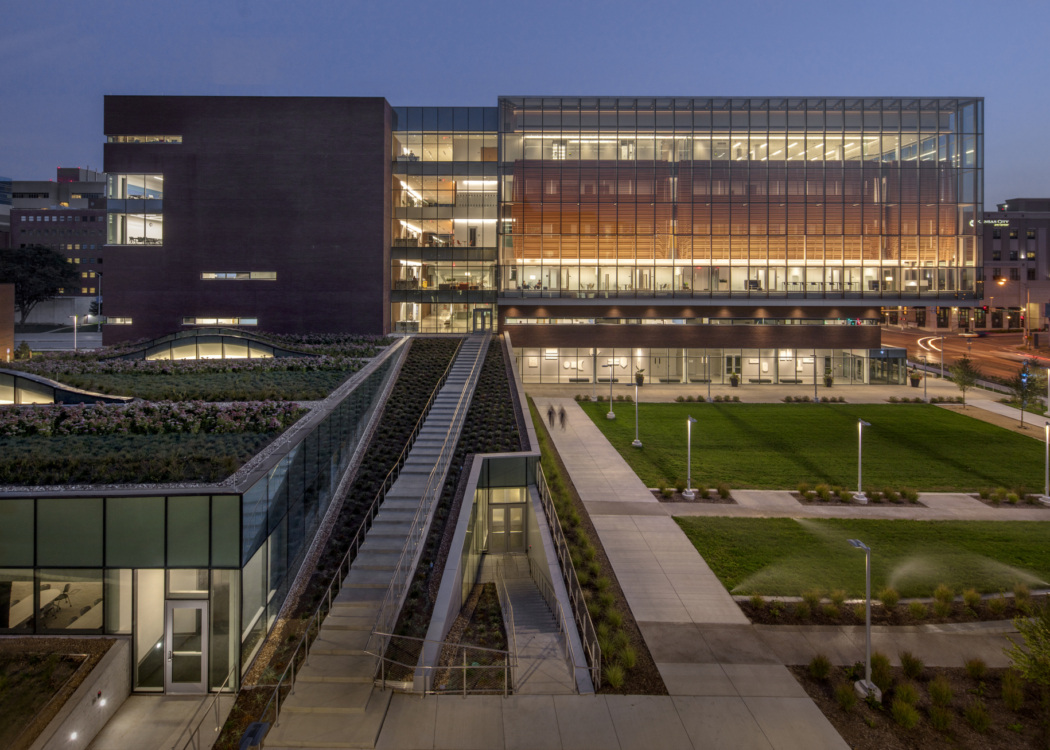

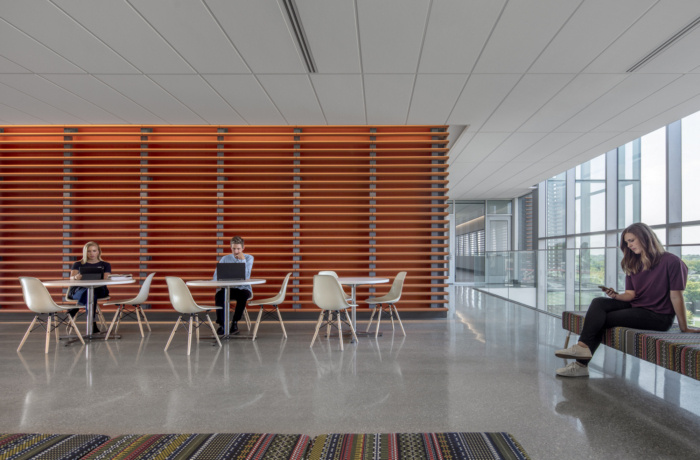
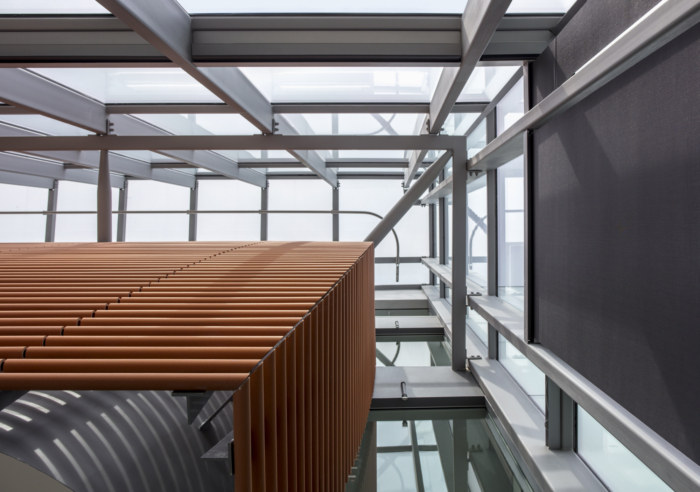
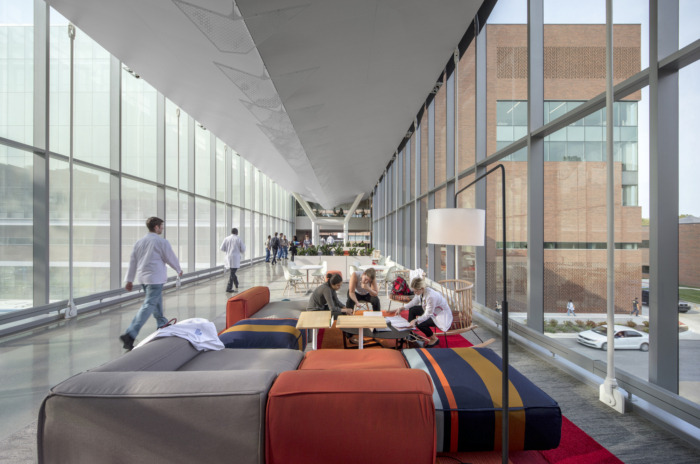
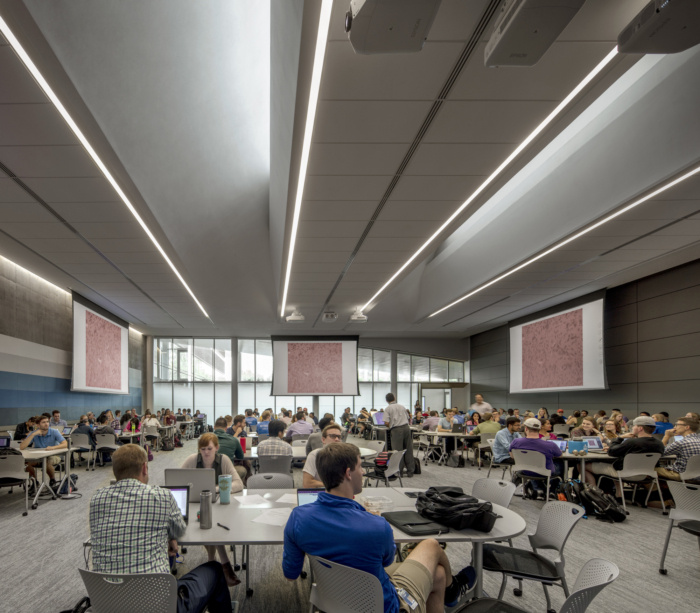



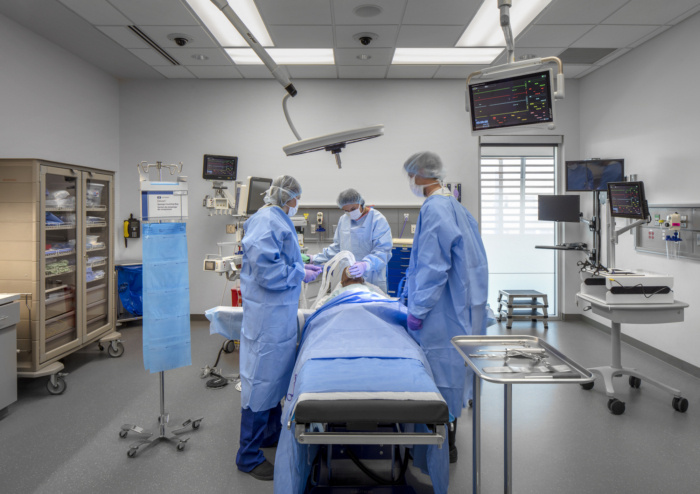
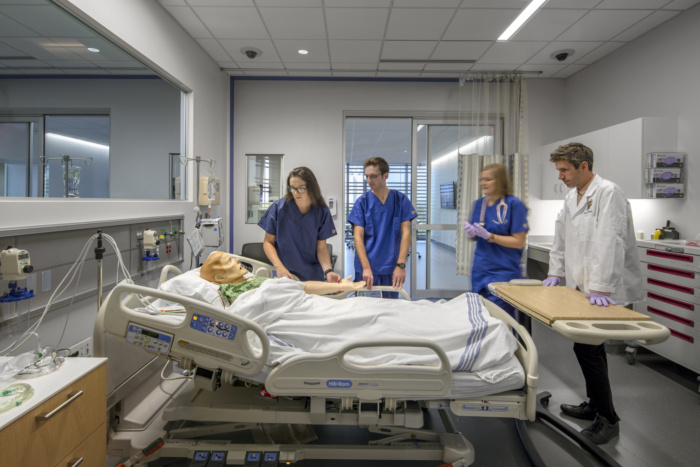
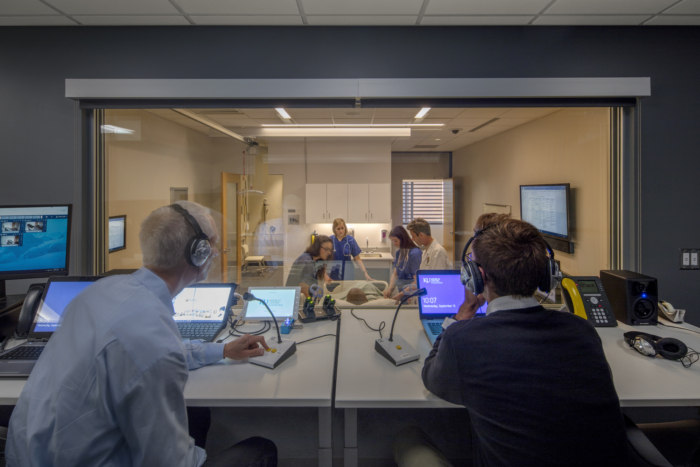

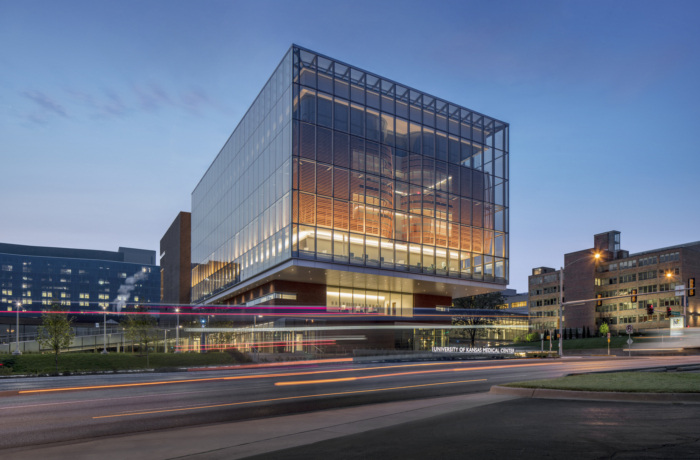










Now editing content for LinkedIn.